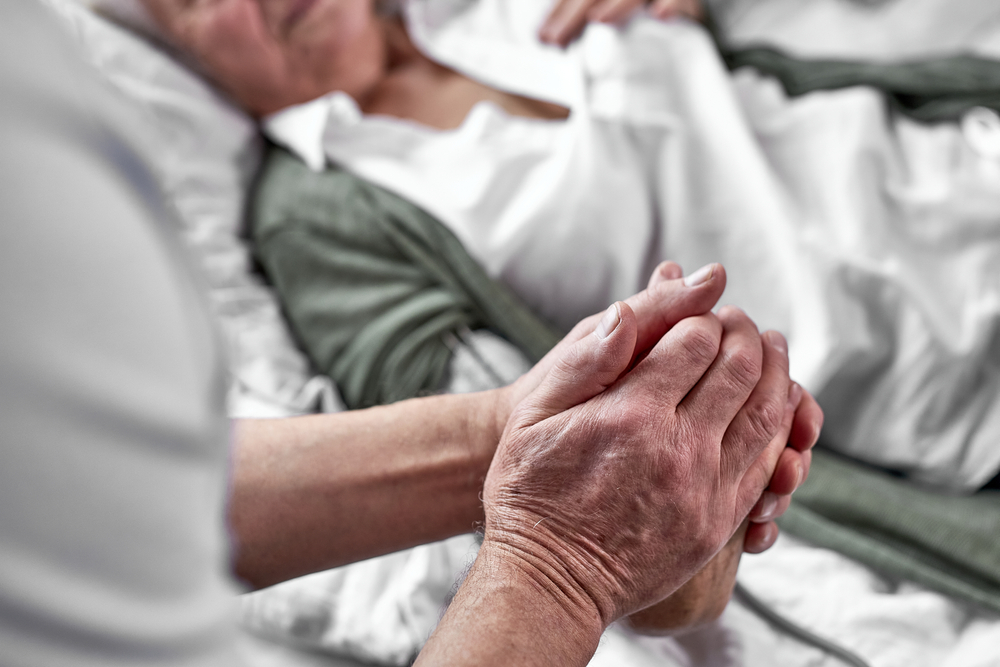As a person nears the end of life, the body undergoes several physical changes. These signs are part of the natural process of dying and are important for caregivers and family members to recognize. According to healthcare professionals, the body begins to signal that it is shutting down, often manifesting through visible changes in behavior and physical condition. Understanding these signs can provide comfort during this difficult time and help ensure that loved ones receive proper care. Let’s explore these physical changes in detail.

1. Constant Drowsiness and Fatigue
One of the first signs that someone is approaching the end of life is an overwhelming sense of fatigue. They may sleep for longer periods or remain drowsy for most of the day. This increased need for rest occurs because the body is conserving energy as its systems begin to shut down. If your loved one wishes to sleep, it’s essential to allow them to rest. Ensure that their surroundings are as comfortable as possible, and assist them with turning or repositioning to prevent discomfort.
2. Loss of Appetite and Difficulty Eating
As the body prepares for death, many of its internal functions slow down. This includes digestion. A terminally ill person may lose interest in eating or drinking, leading to a noticeable reduction in their food and fluid intake. This is normal at the end of life, but it can be distressing for family members. To help alleviate discomfort, you can moisten their lips with balm or offer small sips of water. Always consult a healthcare provider if you’re unsure about their nutrition needs.
3. Changes in Breathing Patterns
Breathing patterns often change significantly as a person approaches death. Their breathing may become irregular, fluctuating between shallow and deep breaths. Pauses between breaths may also become more apparent, a condition known as Cheyne-Stokes respiration. You may also hear a rattling or gurgling sound caused by mucus build-up, which is common at this stage. To ease breathing, try repositioning them so they are in a comfortable position that allows their lungs to expand.
4. Hallucinations and Confusion
Cognitive changes such as confusion and hallucinations are not uncommon in the final stages of life. These changes may be brought on by medications or chemical imbalances within the body. The person may see or hear things that are not there or become disoriented. In such instances, offering gentle reminders of their surroundings and speaking in a calm, soothing voice can help ease their distress. Always approach with care, as these episodes can be unsettling for both the individual and their loved ones.

5. Lowered Body Temperature
As the body shuts down, blood circulation becomes concentrated around the vital organs, leaving the hands, feet, and legs cold to the touch. This reduction in blood flow may also cause the skin to appear pale or develop bluish-purple patches, a process known as mottling. Even though the person may not feel cold, providing a blanket can offer warmth and comfort during this time.
6. Changes in Bowel Movements and Urination
Bowel and bladder functions diminish as a person nears the end of life due to reduced fluid and food intake. This leads to infrequent urination and bowel movements. While this is a natural part of the dying process, it can cause discomfort or anxiety. In some cases, the person may lose control of their bladder or bowels. In such situations, professional caregivers can provide necessary assistance, ensuring dignity and comfort.

7. Muscle Weakness and Loss of Mobility
A noticeable sign of approaching death is the weakening of muscles. Simple tasks such as lifting a cup, turning over in bed, or speaking may become increasingly difficult. The person may need assistance with these activities, so it’s important to offer gentle support. Helping them reposition or making adjustments to their environment can alleviate physical strain and increase their comfort.
8. Social Withdrawal
As energy levels dwindle, many people nearing the end of life withdraw from social interactions. They may speak less or show little interest in conversations. This withdrawal is not a reflection of how they feel about their loved ones but rather a natural part of the dying process. It’s essential to respect their need for quiet and rest while still providing emotional support. Visiting them when they feel up to it can ensure meaningful moments of connection during their final days.

9. Other Bodily Changes
In the last hours of life, vital signs undergo further changes. Blood pressure often drops, and the heartbeat becomes irregular or faint. The pulse may also be weak or hard to detect. These signs indicate that the body’s systems are shutting down. While this may be difficult to witness, these changes are natural and signal that the end of life is approaching.
Conclusion: Providing Comfort During the Final Days
Understanding the physical changes that occur at the end of life can help families and caregivers provide better support to their loved ones. While these signs may seem alarming, they are part of the natural process of the body slowing down and preparing for death. Ensuring that the person is comfortable, surrounded by loved ones, and receiving appropriate care is the best way to ease their journey during this time. By recognizing these changes, you can focus on providing comfort, love, and dignity in the final days.


